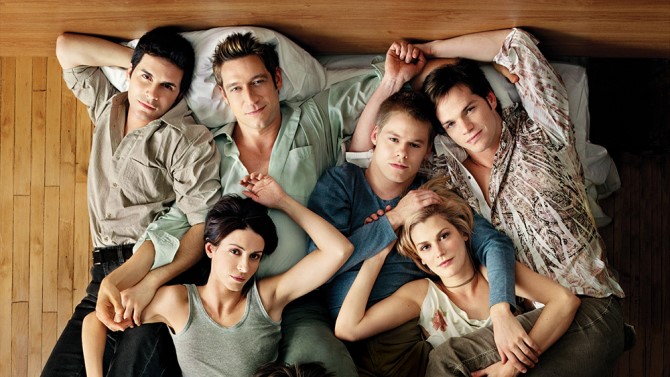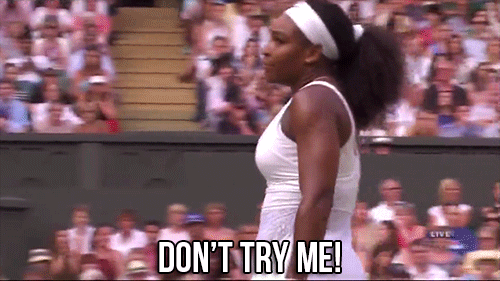
Have you ever thought about the origins of the words we use in everyday discussion? Well, neither have I…until recently. I found out that colloquial terms such as “yasss” and “slay” have been appropriated from Queer culture. More specifically, from the transgender community. This is a culture that has been disenfranchised and ridiculed for centuries, and its existence undermined by many. Literary critic and political activist Bell Hooks argues that many negative definition of the term drag “reconnect this label to an experience that is burdensome, as retrograde and retrogressive”[1]. Yet, here we are in the 21 century using their language, whilst continuing to delegitimise the queer culture. In the podcast Reply All, the host interviews ballroom “legend” Jose Xtravaganza. He is known for popularising voguing, and is one of the most famous personalities to emerge from the ballroom scene.
When asked for his opinion on the growing popularity and usage of “drag” vocabulary, Jose explains that for him, these terms are not simply words. He refers to them as “speaking code”, developed to prevent others from understanding their conversations. Jose further explains that the individuals who have invented the many colloquial terms have sadly passed away. For Jose these words embody the suffering and embarrassment his community had to endure. Arguably, the transgender community developed their own lexis to separate themselves from mainstream or hegemonic social conventions. Since, it is the very concept of societal norms that confine them to the realm of the other. Furthermore, there is something powerful about creating a language which other people will not be able to comprehend. This is significant for a community which lacks authority and recognition. Hooks describes their predicament in this manner: “to choose to appear as “female” when one is “male” is always constructed in the patriarchal mindset as a loss, as a choice worth only ridicule”[2]. The invention of a language which is being used constantly by straight or heterosexual individuals reinforces the irony embedded within this statement. On the one hand, many transgender individuals are mocked and humiliated for their choices. Yet, their language is popularised and turned into hashtags which circulated globally.
Therefore, popular culture has arguably given us access to the language of the queer community, and become a portal into a sub-culture which is becoming more and more prominent. It was because of a Lady Gaga fan the term “yasss” recognised as a term, and given an actual dictionary definition.
In this video, the fan can be heard articulating his adoration by shouting “yasss Gaga”, whilst Lady Gaga poses for the camera outside a hotel. The young man is a member of the queer community, and this term functions as a marker of his identity. This video went viral, and initiated a surge in the usage of the word. It must also be noted that language also functions as a tool that can be used to construct identity.
In the documentary Paris is Burning, the viewer encouters the fluid nature of identity. More specifically, the viewer is taken into the lives of homosexual and transgender individuals from Hispanic and African American descent. We are invited into the Ballroom, and experience a unique form of entertainment. The Ball has various categories in which one can compete in, and the winner is given a highly coveted price. Most of the categories include a form of dance or expression that must be mastered by the competitors. However, there is one peculiar subdivision entitled Realness, and inorfer to win the individual must embody a “straight” person they may have encountered. To put it plainly: “if you are gay, you have to go back into the closet”. This category may seem strange, and at first I was perplexed as well. Then, I slowly started to realise that by changing their appearance and mannerism, they are in fact ridiculing heterosexuality in the same manner homosexualitu is derided in mainstream depictions. Once again, this demonstrates the fluidity of identity categorization, a person’s attire and behaviour can determine whether or not they are recognised as gay or straight. Consequently, this also reaffirms the notion that identity is “capable of construction, invention and change”.
Returning to the function of popular culture in this dialectic between homosexuality and hertonormativity, I would also like to argue that popular culture has not only given us access to term such as “slay”. It also functions as a catalyst in the process of appropriating queer culture, as if it is accessible to all. On multiple social media platforms, individuals are utilising these neologism without knowing the sentiments attached to it. More importantly, all of these users are acknowledging and endorsing the existence of queer culture, some without being fully aware of this. A twitter user posted an image of a girl sobbing in response to seeing so many “heterosexual friends” use “yasss” on Facebook comments. This user felt as if his culture was finally being validated, and felt a sense of pride. For him this the lines between homosexuality and heterosexuality were being blurred. However, is this really the case when so many people are typing “yasss” in all caps without knowing that it was never intended for them to utilise.
[1] Bell Hooks, ‘Is Paris Burning?’, in Black Looks: Race and Representation, p. 146.
[2]Bell Hooks, ‘Is Paris Burning?’, in Black Looks: Race and Representation, p. 145.





















 The excerpt above is taken from Dana Spoitta’s novel Innocent and Others. When I first read it, I felt like I was eavesdropping on an actual conversation. Therefore, novelists may decide to include references to popular culture in their work to truthfully recreate reality in their fiction.
The excerpt above is taken from Dana Spoitta’s novel Innocent and Others. When I first read it, I felt like I was eavesdropping on an actual conversation. Therefore, novelists may decide to include references to popular culture in their work to truthfully recreate reality in their fiction.